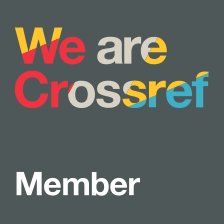Daniel Kvíčala – Silesian University, Univerzitní nám. 1934/3, Karviná, 733 40, Czech Republic
Halina Starzyczná – Silesian University, Univerzitní nám. 1934/3, Karviná, 733 40, Czech Republic
7th International Scientific-Business Conference – LIMEN 2021 – Leadership, Innovation, Management and Economics: Integrated Politics of Research – SELECTED PAPERS, Online/virtual, December 16, 2021, published by the Association of Economists and Managers of the Balkans, Belgrade; Printed by: SKRIPTA International, Belgrade, ISBN 978-86-80194-53-0, ISSN 2683-6149, DOI: https://doi.org/10.31410/LIMEN.S.P.2021
Keywords:
CRM;
Customer buying behaviour;
Shopping behaviour;
E-loyalty;
E-shop
Abstract
The article deals with customer e-loyalty. The main objective of the research was to investigate customer buying behaviour, hence customer e-loyalty in e-commerce, and the implications of this for e-shops. Specifically, it concerns how customers behave at e-shops, how often they buy from the e-shops and what kind of revenue they bring to the e-shops. First, the theoretical background of the research is presented, based on some studies. The theoretical discussion proceeds from the broader context of loyalty. The core of the theory is e-loyalty. Secondary research and its results are then characterized. The subject of the research is the analysis of empirical e-shop data related to the manifestations of behavioural e-loyalty. Indicators informing about the proportion of loyal customers on the main variables of interest, concerning the total number of all customers, the number of visits to the e-shop, the number of transactions and the sales volume, were evaluated. Also, the subject of the research is a company operating e-shops in selected countries and its customers. The research covers a total of 13,418 customers. The results obtained contradict the claims of some authors that e-loyalty is one of the key factors for the success of e-shops and that e-loyal customers generate a substantial part of the volume of purchases and sales.

Download file
LIMEN Conference
Creative Commons Non Commercial CC BY-NC: This article is distributed under the terms of the Creative Commons Attribution-Non-Commercial 4.0 License (https://creativecommons.org/licenses/by-nc/4.0/) which permits non-commercial use, reproduction and distribution of the work without further permission.

References
Aaker, D. (1991). Managing Brand Equity. Capitalizing on the Value of a Brand Name. New York: Free Press.
Alba, J. W., Lynch, J., Weitz, B., Janiszewski, C. & Wood, S. (1997). Interactive Home Shopping: Consumer, Retailer, and Manufacturer Incentives to Participate in Electronic Marketplaces. Journal of Marketing. Vol. 61. https://doi.org/10.2307/1251788.
Andrews, R.L. & Currim, I.S. (2004). Behavioural differences between consumers attracted to shopping online versus traditional supermarkets: implications for enterprise design and marketing strategy. International Journal of Internet Marketing and Advertising, 1(1) 38– 61. https://doi.org/10.1504/IJIMA.2004.003689.
Bennett, D., & Graham, C. (2010). Is loyalty driving growth for the brand in front? A two-purchase analysis of car category dynamics in Thailand. Journal of Strategic Marketing, 18(7), 573–585. https://doi.org/10.1080/0965254X.2010.529156
Berkowitz, E. N., Jacoby, J., & Chestnut, R. (1978). Brand Loyalty: Measurement and Management. Journal of Marketing Research, 15(4), 659. https://doi.org/10.2307/3150644
Blecharz, P. (2015). Kvalita a zákazník. Praha: Ekopress.
Brynjolfsson, E., Hu, Y., & Simester, D. (2011). Goodbye Pareto Principle, Hello Long Tail: The Effect of Search Costs on the Concentration of Product Sales. Management Science, 57(8), 1373–1386. https://doi.org/10.1287/mnsc.1110.1371.
Burnham, T. A., Frels, J. K. & Mahajan, V. (2003). Consumer switching costs: A typology, antecedents, and consequences. Journal of the Academy of Marketing Science. 31, 109-126. https://doi.org/10.1177/0092070302250897.
Day, G. S. (2000). Managing market relationships. Journal of the Academy of Marketing Science, no. 28(1), 24–30. https://doi:10.1177/009207030028.1003.
Degeratu, A. M., Rangaswamy, A. & Wu, J., (2000). Consumer choice behavior in online and traditional supermarkets: The effects of brand name, price, and other search attributes. International Journal of Research in Marketing 17(1), 55–78. https://doi.org/10.1016/S0167- 8116(00)00005-7.
De Pelsmacker, P., Geuens, M. & J. Bergh. (2003). Marketingová komunikace. Praha: Grada Publishing.
Ehrenberg, A. S. C. (1995). Empirical Generalisations, Theory, and Method. Marketing Science, 14(3), G20–G28.
Esmaeilpour, F. (2015). The role of functional and symbolic brand associations on brand loyalty. A study on luxury brands. Journal of Fashion Marketing & Management. 19(4), pp 467- 484. https://doi.org/10.1108/JFMM-02-2015-0011
Fournier, S., Dobscha, S. & Mick, D. G. (1998). Preventing the Premature Death of Relationship Marketing. Harvard Business Review 76(1), 42-4.
Gommans, M., Krishnan, K. & Scheffold, K., (2001). From Brand Loyalty to E-Loyalty: A Conceptual Framework. Journal of Economic and Social Research, 3(1), 43-58.
Graham, C., Bennett, D., Franke, K., Henfrey, C., & Nagy, M. (2017). Double Jeopardy – 50 Years On. Reviving a Forgotten Tool that Still Predicts Brand Loyalty. Australasian Marketing Journal (AMJ), 25. https://doi.org/10.1016/j.ausmj.2017.10.009
Grondin, B., (2002). A framework of e-loyalty levers (masters). Diploma work. Concordia University.
Keller, K., L. (2013). Strategic Brand Management. 4th Edition. Boston: Pearson.
Kau Ah Keng, & Ehrenberg, A. S. C. (1984). Patterns of Store Choice. Journal of Marketing Research (JMR), 21(4), 399–409. https://doi.org/10.2307/3151466
Kotler, P. & K. L. Keller (2016). Marketing Management. 15th edition. Boston: Pearson.
Kotler, P., Kartajaya, H., & Setiawan, I. (2016). Marketing 4.0: Moving from Traditional to Digital. 1. ed. Wiley and Sons.
Kotler, P., Kartajaya, H., & Setiawan, I. (2021). Marketing 5.0. Wiley John and Sons.
Kumar, V. a J. & Reinartz, W. (2016). Creating enduring customer value. Journal of Marketing, 80(0). 36-68. https://doi.org/10.1509/JM.15.0414.
Laudon, K.C. & Traver, C.G. (2021). E-Commerce 2020- 2021. Business, technology a society. Pearson.
Learn, P. & Lin, H. (2003). A Customer Loyalty Model for E-Service Context. J. Electron Commerce Res, 4(4), 156–167.
Lošťáková, H. et al, (2009). Diferencované řízení vztahů se zákazníky. Praha: Grada Publishing.
Lošťáková, H. et al, (2017). Nástroje posilování vztahů se zákazníky na B2B trhu. Praha: Grada Publishing.
Nyilasy, G., & Reid, L. N. (2007). The academician–practitioner gap in advertising. International Journal of Advertising, 26(4), 425–445. https://doi.org/10.1080/02650487.2007.11073027
Oliver R. L. (1999). Whence consumer loyalty? Journal of Marketing, Vol. 63, 33–44. https:// doi.org/10.2307/1252099.
Reichheld, F. F. (1996). The loyalty effect: The Hidden Force Behind Growth, Profits and Lasting Value. Boston: Harvard Business School Press.
Reichheld, F. F. (2001). Loyalty Rules! How today´s leaders Build lasting relationships. Boston: Harvard Business School Press.
Reichheld, F. F. & Schefter, P. (2000). E-loyalty: your secret weapon on the web. Harvard Business Review, 78(4), 105–113.
Roberts, B. (2019). Loajalita zákazníka nestojí na věrnostních kartičkách. [online]. [accessed on October 29, 2020]. Available from https://www.focus-age.cz/m-journal/reklama-podpora-prodeje/bryan-roberts-na-retail-summitu–loajalita-zakaznika-nestoji-na-vernostnich-kartickach__s278x14275.html.
Romaniuk, J. (2011). Are You Blinded by the Heavy (Buyer)… : …. Or Are You Seeing the Light? Journal of Advertising Research, 51(4), 561–563. https://doi.org/10.2501/JAR-51-4- 561-563
Romaniuk, J., & Sharp, B. (2015). How Brands Grow: Part 2: Emerging Markets, Services, Durables, New and Luxury Brands (Illustrated edition). Oxford University Press.
Rigby, D. K., Reichheld, F. F. & P. Schefter (2002). Avoid the four perils of CRM. Harvard Business Review, 80(2), 101-6, 108-9, 130.
Srinivasan, S. S., Anderson, R. & Ponnavolu, K. (2002). Customer loyalty in e-commerce: an exploration of its antecedents and consequences. Journal of Retailing, 78(1), 41–50. https:// doi.org/10.1016/S0022-4359(01)00065-3.
Sharp, B., Romaniuk, J., & Graham, C. (2019). Marketing’s 60/20 Pareto Law. SSRN Electronic Journal. https://doi.org/10.2139/ssrn.3498097
Toufaily, E., Ricard, L., & Perrien, J. (2013). Customer loyalty to a commercial website: Descriptive meta-analysis of the empirical literature and proposal of an integrative model. Journal of Business Research, Advancing Research Methods in Marketing, no. 66, 1436– 1447. https://doi.org/10.1016/j.jbusres.2012.05.011.
Valvi, A.C. & Fragkos, K. C. (2012). Critical review of the e-loyalty literature: a purchase-centred framework. Electron Commer. Res. 12(3), 331–378. https://doi.org/10.1007/s10660- 012-9097-5
Wrigley, N., & Dunn, R. (1984). Stochastic Panel-Data Models of Urban Shopping Behaviour: 2. Multistore Purchasing Patterns and the Dirichlet Model. Environment and Planning A, 16(6), 759–778.
Yen, Y., S. (2011). How does perceived risks complement switching costs in e-commerce? African Journal of Business Management, 5(7), 2919–2929. https://doi.org/10.5897/AJBM10.1402.
Yun, Z., & Good, L. K. (2007). Developing customer loyalty from e‐tail store image attributes. Managing Service Quality: An International Journal, 17(1), 4–22. https://doi. org/10.1108/09604520710720647
Zeithaml, V., Parasuraman, P. & Malhotra (2002). Service Quality Delivery Through Web Sites: A Critical Review of Extant Knowledge. Journal of the Academy of Marketing Science, 30(4), 362–375. https://doi.org/10.1177/009207002236911




